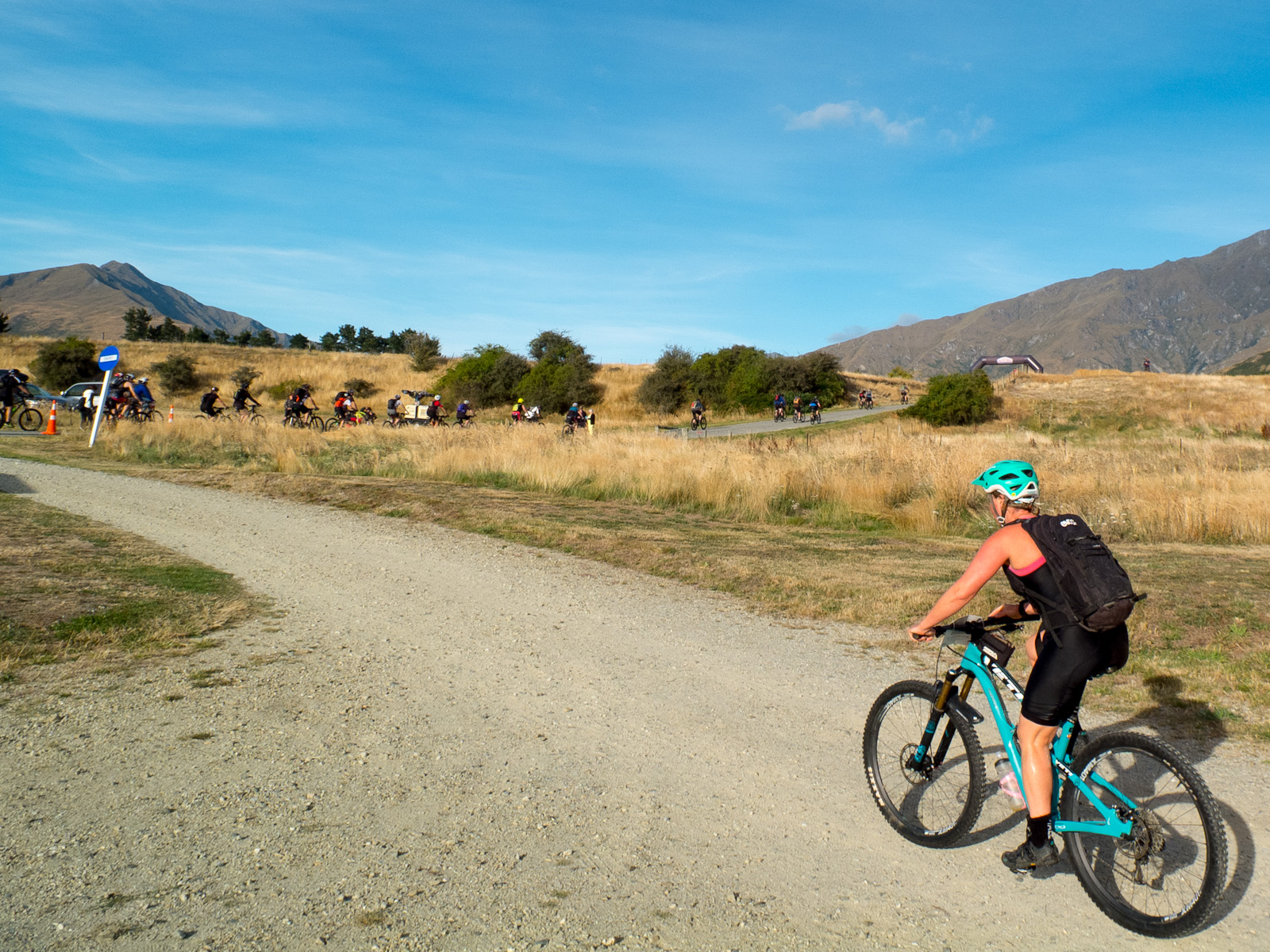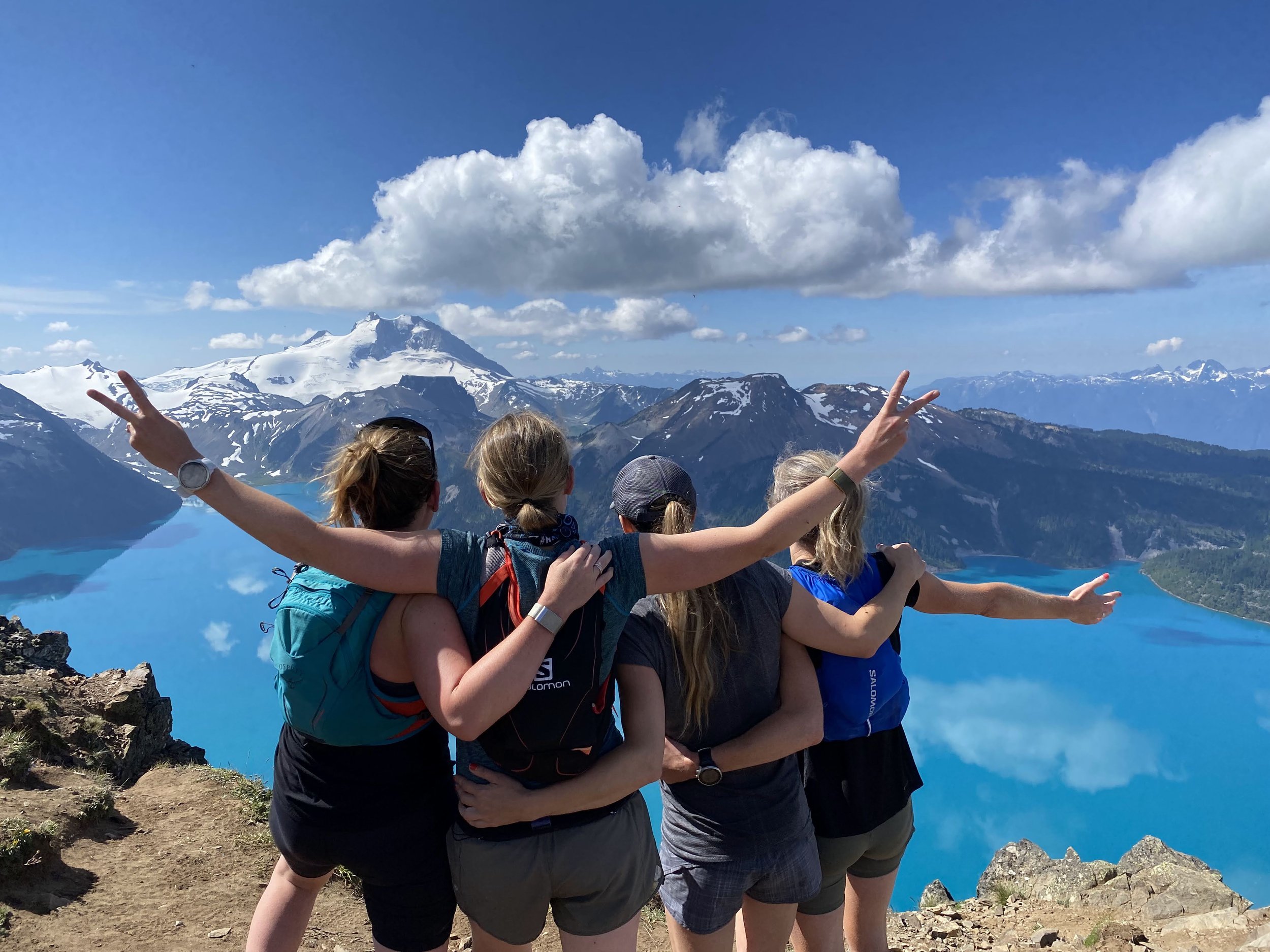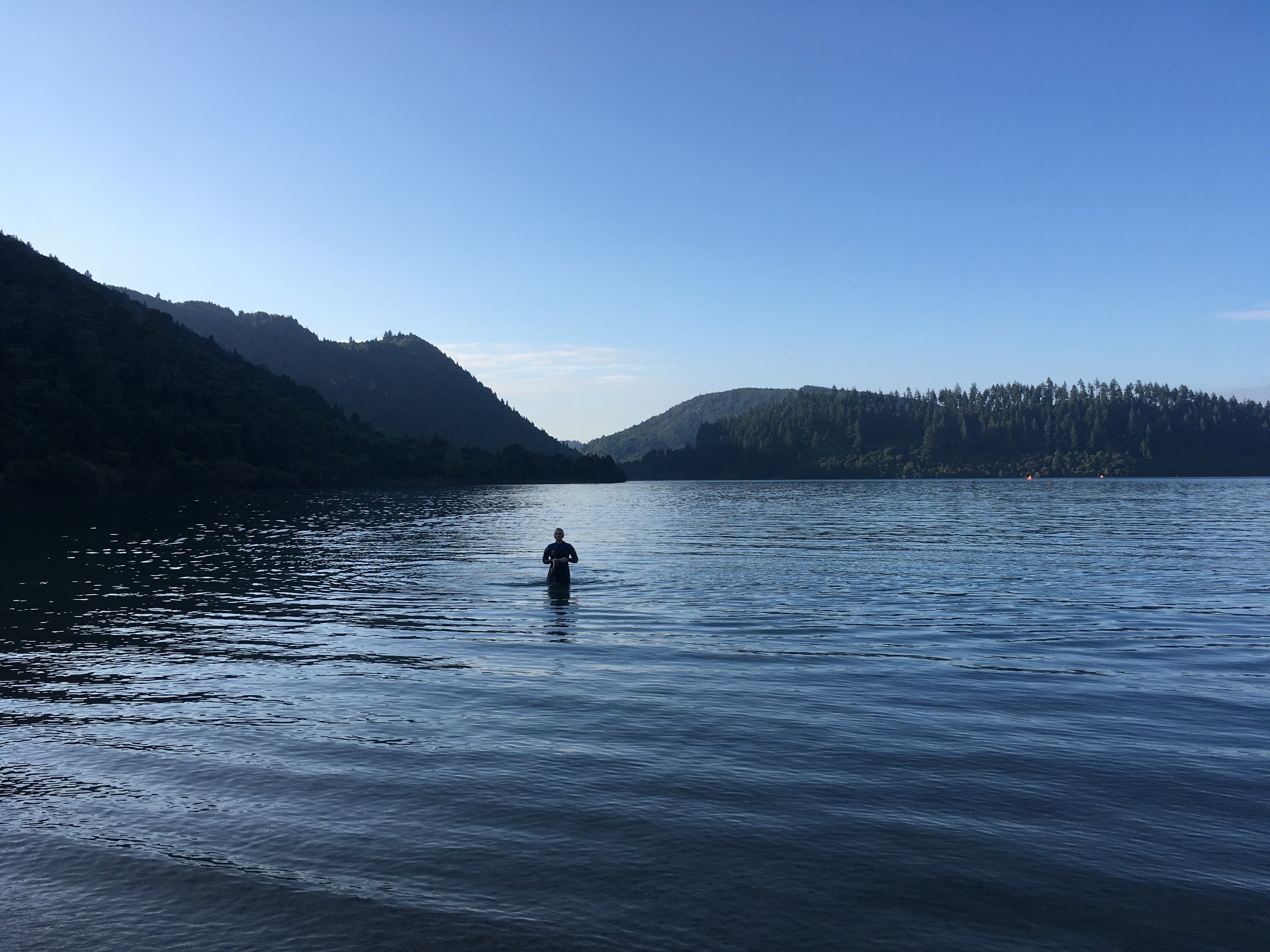
Motatapu Race Report
I signed up for the XTERRA Motatapu as a goal race to train for in my first “Double Summer”, back to back summer seasons. What seemed impossible, soon became a beautiful part of the journey.
Months ago, when I first arrived in New Zealand, I signed up for the XTERRA Motatapu as a goal race to train for in my first “Double Summer” (back to back summer seasons). I Imagined quiet hours of intervals in Christchurch, hammering out the work needed to get me to the start line. But when our plans to stay in Christchurch changed, I was faced with the challenge of training while traveling around New Zealand. What seemed impossible, soon became a beautiful part of the journey.
Swim (2k):
I swam in beautiful lakes, oceans and dozens of pools, it’s a very cool way to train. Check out my other post about making the most of swim training on the road here.
Race Day: The swim is my biggest struggle. The gun went off, we stampeded into the water and I hammered through my first hundred meters. Panic set in strong. I either wasn’t as prepared as I thought I was or these racers were really fast. Either way, that was a slow, zig-zagged effort.
Mountain Bike (47k):
Of all disciplines I felt really strong on the bike. We bagged huge days in the last few months. From bike packing the Saint James Trail to the point to point Wakamarina, to Rotorua heaven, my legs felt strong. My only note for the coming season, I need to put more structure into training on the bike. Yep, Intervals…
Race Day: The Motatapu trail itself is closed to the public outside of the race, so I rode the 47k blind. Watching others do a fair bit of blind racing lately, (Kate, Shane, Shaun and Marissa - You have my utmost respect) this was by far the most fun part of the race. The terrain was fairly consistent, gorgeous and fast rolling. A serious highlight was the challenge of the river crossings. We did dozens of them. Some up to 50 meters long, some fork stanchions deep. Because my swim was so mediocre, I left everything out on the trail trying to gain back time on the bike. I passed so many people that I rode the last few kilometres on sheer adrenaline.
Trail Run (15k):
Training for the trail run, just as with the other disciplines, was difficult. In traditional training most sessions are some form of interval work but travel requires creativity. I turned most hikes into runs with scenic exploring missions.
Race Day: Shortly after I made the switch over to my trail runners, I rounded the corner out of transition, hit Tobin’s Track climb and suddenly felt awful. Legs were dead, totally out of gas. A few women passed me. There goes podium and here comes the dark moments of my race. Should I go on? Could I go on? I started to walk. I weighed my options as I slogged up the steep track. Pulling up the feeling of my first DNF, from a bike race last year, I decided to keep going - even if I had to walk the whole thing. I hated the idea of not finishing a race. From walk, to slow jog to decent pace, I tackled the full 15k. The views were just as stunning as the bike and the trail was significantly more challenging. On more than one occasion I used rope or railing to traverse the trail, scaled ladder-like climbs and of course sloshed through a second lap of deep river crossings.
Finish:
Sunburnt, soaked from river crossings and totally exhausted, I ran the last 1/2 kilometre with my dear friend Shaun (Frysie), nearly in tears of joy to be so close to finishing. He peeled out then Marissa and my partner Dan met me with open arms on the other side of the finish arches. What a stupendous support crew. The Motatapu was an incredible experience and has me hungry to try more like it in the future!
DNF - 5 Things I'll Do Differently For My Next Multi-Day Bike Race
Here are five things I'll pay special attention to, in order to avoid a future DNF during a multi-day race.
DNF - 5 Things I'll Do Differently For My Next Multi-Day Bike Race
D.N.F. - It's an acronym that stands for "Did Not Finish". It's a tough call that almost every endurance athlete has to make at one point in his or her race career. For me, it was this past weekend at the Enduro World Series Qualifier in Dunedin, New Zealand.
Signal Hill lookout || Photo: Dan Harmon
The week kicked off in incredible form. The local Yeti Bikes tribe at Bike Otago was full of friendly advice and high fives. We set out each day exploring the awesome local trail networks.
When day one of the race kicked off I was brimming with stoke. The event was huge: 3 giant climbs and 3 of the 4 stages were blind. Mentally and physically I was spent. It was glorious. Below is a short video of the course my Suunto watch generated at the end of the day:
When I woke up for day 2, my body was stiff, cramping and mentally I just couldn't muster up the energy to withstand another dozen "accidental brushes with trees" or "over-the-bars" crashes. I limped around our hotel room until I finally made the call not to race. To be totally honest, I felt ashamed and embarrassed. But I put my ego aside and signed up to volunteer marshal with Dan instead. I had plenty of quiet time on the way home to figure out where I went wrong. Here are five things I'll pay special attention to, in order to avoid a future DNF during a multi-day race:
St Kilda Beach || Photo: Nina Arnold
1. Physical: More stretching and rest. Leading up to the event I rode local trails nearly every day. My logic was ride slowly and it wouldn't set me back too much but it did. If there are two rest days in my taper week, I'll stick with that next time.
Signal Hill || Photo: Nina Arnold
2. Nutrition: Cook at home. Dan and I wanted to treat ourselves after a big effort to a meal out. We chose Indian and asked for spicy. You can imagine how well that played out. Next time we'll prepare all of our meals at home with the right recovery foods.
3. Comfort: Have clean racing kit ready to go. I was exhausted after day one and neglected to wash my gear. In a perfect world I'd have a second jersey, shammy and shorts ready to go, but at the moment I only had one. In hindsight, I'd get my racing gear clean as soon as I was fed and showered (before that awesome nap) so I had something fresh and warm to wear the next day. It gets a bit tricky at a hotel, but having a plan is key.
Fixing my bike during practice || Photo: Dan Harmon
4. Tech Support: Give the Yeti another bike check. My tires and suspension were caked in fresh Dunedin mud and my bike needed a once-over after a few crashes on day one. Sometime after meeting my recovery food and shower needs and before having a snooze, giving the bike a wash and bolt tighten would have been stellar.
5. Mental: Quiet reflection and low stimulus. There was so much activity leading up to and mid-race that I forgot to take time to close my eyes, visualize a successful weekend ahead and relax. On some level, I may have subconsciously already written off Sunday before the day began. This may be one of my most important take-aways. The more I experiment with nutrition and training, the more I am discovering that the mental aspect of training is wildly important.
I've found a cool article on Sport Psychology Today that has been keeping me occupied: "The Power of Visualization".
After writing down my thoughts, the negative feelings quickly dissolved. There is something special about those trails. The community of riders, trail builders, and racers that make up Dunedin are so warm and welcoming. Many thanks to Bike Otago, Kashi, Kane and the Yeti New Zealand Team, Mountain Biking Otago and the rad ladies that shared there trails with me. I can't wait to get back down to shred that awesome part of the South Island again.
Rad little rainbow after the storm || Photo: Dan Harmon

















